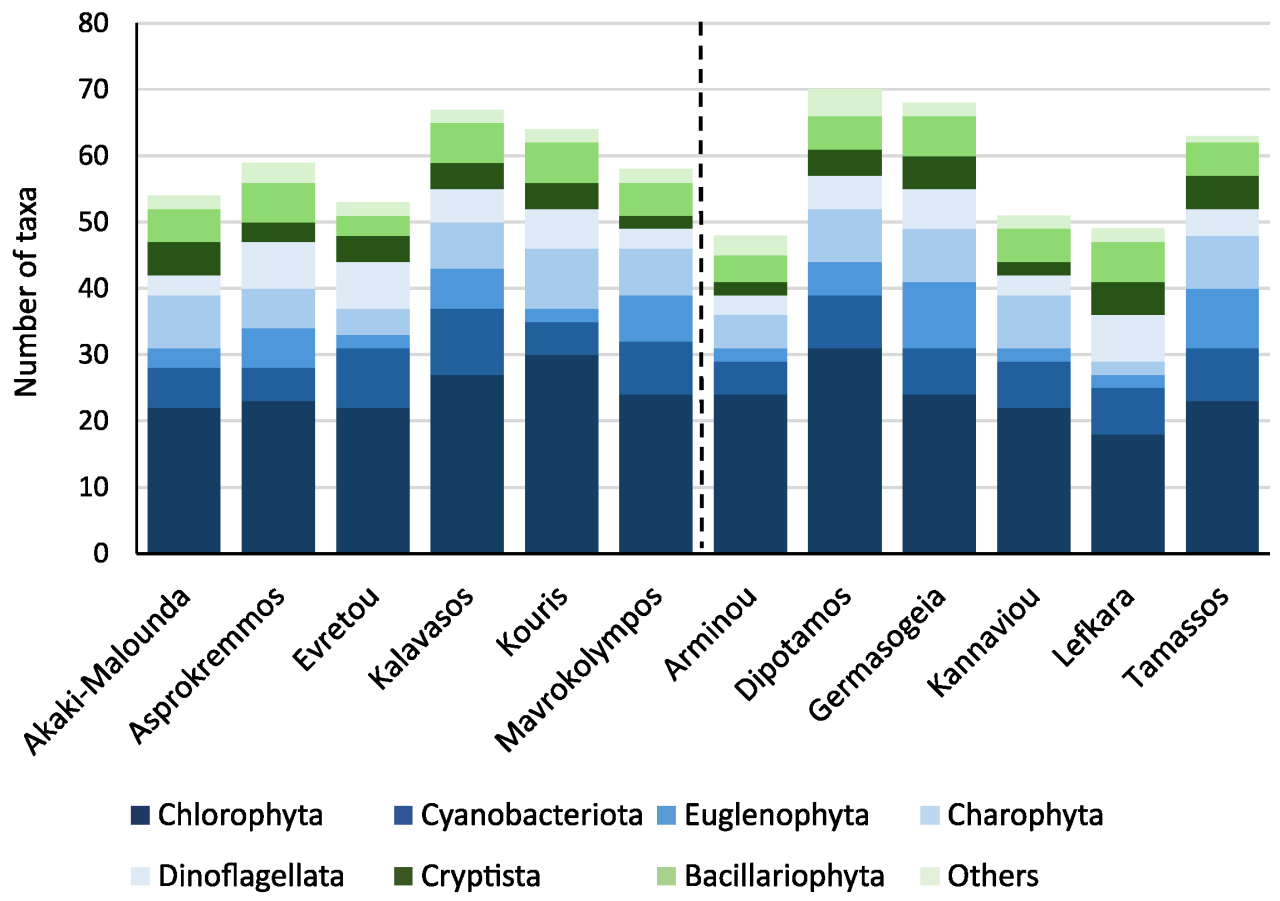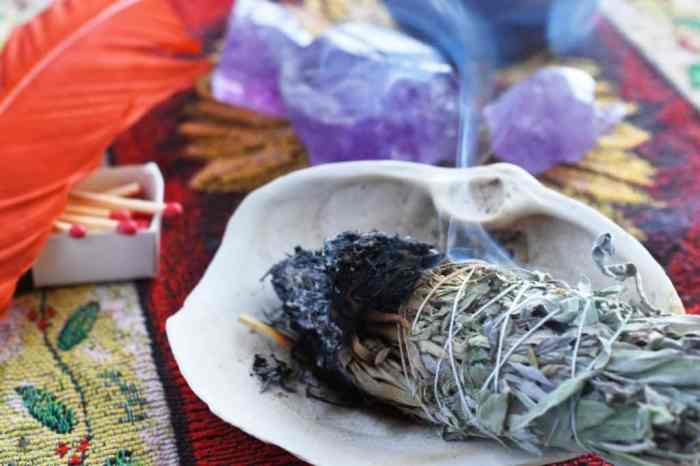Science says burning sage can clean the air and improve your health, but is it truly effective? This blog post delves into the scientific basis of sage’s air-purifying properties, examining the potential health benefits and risks, alternative methods, and the cultural significance behind this age-old practice. We’ll also look at safety precautions and environmental impacts, offering a comprehensive view of sage burning.
The article investigates the chemical compounds released during sage burning and explores how they might impact air quality. It analyzes scientific studies on the subject, comparing sage’s purported effects with other natural air purification methods. Furthermore, the potential health benefits and risks of inhaling these compounds will be discussed, including the potential impact on individuals with respiratory conditions.
Scientific Basis of Air Purification
Burning sage, a practice steeped in cultural tradition, is often touted for its purported air-purifying properties. While anecdotal evidence abounds, a rigorous scientific investigation into the chemical reactions and potential effects on air quality is crucial to understanding its efficacy. This analysis explores the scientific basis behind these claims, examining the compounds released during burning, potential mechanisms of action, and comparing sage burning to other air purification methods.
Chemical Compounds Released During Sage Burning
Sage, when burned, releases a complex mixture of volatile organic compounds (VOCs). These VOCs are organic chemicals that vaporize at relatively low temperatures. The specific compounds released depend on the type of sage used, the temperature of combustion, and the presence of other materials in the burning mixture. Common VOCs emitted include pinene, limonene, and various terpenes.
These compounds contribute to the characteristic scent of burning sage. Furthermore, smaller amounts of other volatile substances such as formaldehyde, depending on the exact species of sage and combustion conditions, may also be released.
Potential Mechanisms of Air Quality Impact
The mechanisms by which these compounds might affect air quality are multifaceted and not fully understood. One potential mechanism involves the adsorption of airborne pollutants onto the surfaces of these VOCs. The VOCs could potentially bind to particulate matter, or pollutants, such as dust, smoke, or pollen, rendering them less airborne and more likely to be filtered out of the air.
Another potential mechanism involves the interaction of these compounds with certain volatile organic pollutants, potentially neutralizing them. Furthermore, the presence of some VOCs, like limonene, may help break down other VOCs or particulate matter over time through oxidation reactions. However, the extent of these effects is not yet conclusively proven by scientific evidence.
Scientific Studies on Air Purification Effects
Currently, there are limited scientific studies specifically investigating the air purification effects of sage burning. Most research focuses on the chemical composition of sage smoke and the health effects of exposure to these compounds. While some studies suggest potential antimicrobial properties of sage compounds, the direct impact on indoor air quality remains a subject of ongoing investigation. More rigorous studies are needed to definitively assess the effectiveness of sage burning as an air purification method.
Comparison with Other Natural Air Purification Methods
Essential oil diffusers, another popular natural air purification method, also release VOCs into the air. However, the specific VOC profiles differ significantly between essential oils and sage. For example, lavender oil typically releases linalool, while peppermint oil often contains menthol. These differences in chemical compositions could lead to varying effects on indoor air quality. Ultimately, the comparative efficacy of sage burning and essential oil diffusers needs further research.
Comparison of VOCs, Science says burning sage can clean the air and improve your health
| VOC Category | Sage Burning | Other Indoor Air Pollutants |
|---|---|---|
| Terpenes | Pinene, Limonene, others | Formaldehyde, Benzene, Toluene, Xylene |
| Other VOCs | Possible presence of smaller amounts of Formaldehyde | VOCs from paints, cleaning products, furniture |
| Particulate Matter | Potential adsorption | Dust, pollen, combustion byproducts |
The table above provides a rudimentary comparison of VOCs emitted by sage burning with other common indoor air pollutants. It highlights the differences in the types of VOCs present and the potential interaction with other pollutants. More comprehensive data is needed to fully understand the impact of sage burning on indoor air quality.
Potential Health Effects

Burning sage, a practice with cultural significance, has become increasingly popular for its purported air-purifying and health-boosting properties. However, the potential health effects associated with inhaling the smoke from burning sage are complex and multifaceted. While some studies suggest potential benefits, others highlight potential risks that warrant careful consideration. This section will delve into the potential positive and negative impacts of sage burning on human health.Understanding the chemical compounds released during sage burning is crucial for assessing potential health effects.
The combustion process generates various volatile organic compounds (VOCs), including some potentially harmful substances, alongside beneficial ones. The concentration of these compounds and their interaction with the individual’s health status significantly influence the overall outcome.
Potential Benefits of Inhaling Sage Smoke
Some studies suggest that certain compounds released during sage burning may have potential therapeutic benefits. These compounds, like those in essential oils, may have antioxidant and anti-inflammatory properties. However, these benefits are not definitively established, and more research is needed to confirm their efficacy and safety. Anecdotal evidence of perceived relaxation or stress reduction is not equivalent to scientific proof.
Science suggests burning sage can purify the air and potentially boost well-being. But to truly maximize the benefits, consider crafting a personal mission statement. A well-defined mission statement, like the one you can find at write personal mission statement achieve your goal more easily , can provide a framework for focusing your efforts and achieving your health goals, including enjoying the potential benefits of burning sage.
This clarity can help you make the most of the air-purifying properties of sage, enhancing your overall well-being.
Potential Adverse Health Effects
The primary concern surrounding sage burning is the potential for adverse health effects, especially for vulnerable populations. Inhaling the smoke from burning sage can irritate the respiratory system, triggering coughing, wheezing, and shortness of breath. This is particularly problematic for individuals with pre-existing respiratory conditions like asthma or chronic obstructive pulmonary disease (COPD).
Respiratory Irritation and Allergies
The smoke from burning sage contains various volatile organic compounds (VOCs), some of which can act as irritants to the respiratory system. This irritation can lead to coughing, throat soreness, and shortness of breath. Moreover, individuals with allergies may experience allergic reactions, including sneezing, runny nose, and skin rashes, upon exposure to the smoke. The specific compounds causing these reactions can vary depending on the type of sage used and the burning conditions.
Impact on Individuals with Pre-existing Respiratory Conditions
Individuals with pre-existing respiratory conditions, such as asthma or COPD, are particularly vulnerable to the adverse effects of sage smoke. The smoke can trigger asthma attacks or exacerbate COPD symptoms, leading to increased respiratory distress and potentially requiring medical intervention. For these individuals, sage burning should be approached with caution, and alternative methods for improving indoor air quality may be preferable.
Comparison with Other Indoor Air Quality Improvement Methods
Compared to other methods for improving indoor air quality, sage burning presents a less reliable and potentially harmful approach. Using air purifiers, maintaining adequate ventilation, and controlling indoor humidity are proven and safer ways to achieve cleaner indoor air. These methods are backed by scientific evidence and can be tailored to specific needs.
Science says burning sage can purify the air and potentially boost your well-being, which is pretty cool. But, similar to improving your personal environment, effectively engaging employees with training is crucial for a thriving work environment. Check out these 7 ways to engage employees with training to see how it can boost productivity and morale 7 ways to engage employees with training.
Ultimately, whether it’s a healthy home or a healthy workplace, the key is fostering an environment that supports overall well-being, just like burning sage can help improve air quality and your health.
Summary Table of Potential Benefits and Risks
| Health Concern | Potential Benefits (Limited Evidence) | Potential Risks |
|---|---|---|
| Respiratory System | Possible antioxidant effects | Irritation, coughing, wheezing, shortness of breath, particularly for those with pre-existing conditions. |
| Allergies | Possible minor impact | Allergic reactions (sneezing, runny nose, skin rashes) |
| Other Health Conditions | No demonstrable effects | Potential exacerbation of existing conditions, particularly respiratory illnesses. |
Alternative Air Purification Methods

Beyond the traditional practice of burning sage, a range of alternative methods exist for improving indoor air quality. These methods offer various approaches to addressing specific pollutants and offer differing levels of cost, effectiveness, and environmental impact. Understanding these alternatives is crucial for making informed choices tailored to individual needs and priorities.
Air Purifiers
Air purifiers utilize various technologies to remove airborne pollutants. High-efficiency particulate air (HEPA) filters are a common type, effectively trapping microscopic particles like dust, pollen, and mold spores. Other purifiers employ activated carbon filters, which absorb gases and odors. Scientific studies consistently demonstrate the effectiveness of HEPA filters in reducing indoor allergens and improving respiratory health. For example, numerous studies have shown a correlation between reduced exposure to particulate matter and decreased respiratory symptoms.
Science says burning sage can clean the air and improve your health, a concept that’s fascinating to explore. But, have you ever considered how that relates to the unique strengths of middle children? It’s a bit of a leap, but the resilience and adaptability often associated with middle children, as detailed in this insightful article on 10 reasons why middle children are the strongest , might mirror the scientific findings on sage’s positive effects.
Perhaps the ability to adapt and overcome, as seen in middle children, also contributes to the overall well-being that burning sage may promote.
The efficiency of air purifiers depends on factors like the type of filter, the size and power of the unit, and the specific pollutants present in the environment.
Ventilation Systems
Proper ventilation is fundamental for maintaining good indoor air quality. This involves introducing fresh, outdoor air into the space while simultaneously removing stale, polluted air. Efficient ventilation systems can significantly reduce the concentration of volatile organic compounds (VOCs) and other pollutants. Natural ventilation, using open windows and doors, is a cost-effective approach but is dependent on weather conditions.
Mechanical ventilation systems, which use fans and ducts, provide more consistent and controllable air exchange. Evidence supporting the efficacy of ventilation systems comes from studies showing improved air quality and reduced indoor concentrations of pollutants with increased ventilation rates.
Comparison of Methods
| Method | Cost | Effectiveness | Environmental Impact |
|---|---|---|---|
| Sage Burning | Low (for materials) | Limited, primarily for odors; questionable for particulate matter | Potentially high if using non-sustainable materials; releases smoke and particulate matter |
| Air Purifiers | Variable (depending on model and features) | High for specific pollutants (HEPA filters); moderate for gases and odors | Moderate; energy consumption depends on the purifier’s efficiency |
| Ventilation Systems | Variable (depending on type and complexity) | High for most pollutants; excellent for VOCs | Moderate; energy consumption depends on the system’s efficiency |
Designing a Comparative Experiment
To compare the efficacy of sage burning and alternative methods, a controlled experiment is crucial. For instance, to evaluate the removal of particulate matter, one could measure the concentration of specific pollutants in a controlled environment before and after applying each method. The environment would need to be consistent and isolated, and the pollutants would need to be measured precisely.
Variables such as the type of sage used, the duration of burning, and the size of the space should be controlled. A control group without any intervention would be necessary for comparison. This approach allows for quantitative analysis and objective evaluation of each method’s effectiveness.
Key Considerations for Choosing an Air Purification Method
Choosing the right air purification method involves careful consideration of several factors. Specific health conditions, such as asthma or allergies, can influence the selection process. Individuals with respiratory sensitivities might benefit more from air purifiers with HEPA filters or robust ventilation systems. Environmental impact should also be considered, as some methods generate more pollution than others. The cost-effectiveness of the method, its ease of use, and the specific pollutants present in the home are also critical factors.
Cultural and Traditional Uses of Sage: Science Says Burning Sage Can Clean The Air And Improve Your Health
Sage, a versatile herb, holds significant cultural and spiritual value across various traditions. Beyond its culinary applications, sage has been employed in rituals and ceremonies for centuries, often attributed with potent symbolic and practical purposes. This reverence for sage extends to its perceived ability to purify and enhance well-being, influencing beliefs and practices related to air quality and overall health.The profound cultural significance of sage is deeply interwoven with its historical use in rituals and ceremonies.
Ancient civilizations recognized sage’s unique properties, leading to its incorporation into diverse spiritual and healing practices. These traditional uses often stemmed from a combination of empirical observations and deeply held beliefs.
Historical Overview of Sage’s Cultural Significance
Sage has been a revered plant in various cultures throughout history. Its use dates back to ancient civilizations, where it was associated with purification, healing, and spiritual connection. Evidence suggests its presence in ancient Egyptian and Mesopotamian rituals. The medicinal and symbolic properties of sage were further developed and refined in indigenous cultures around the world. These practices were often passed down through generations, enriching cultural traditions and beliefs.
Traditional Beliefs and Practices Surrounding Sage Burning
The act of burning sage, often referred to as smudging, is deeply ingrained in numerous cultures. It is typically performed for purification and spiritual cleansing, aiming to remove negative energies and promote positive vibes. Different cultures employ various techniques and rituals, reflecting unique beliefs and traditions. The act is frequently associated with ceremonies, blessings, and the creation of a sacred space.
Varied Ways Sage is Used in Different Cultures
Sage’s use extends far beyond a single cultural context. Different cultures have developed unique ways of utilizing sage, incorporating it into various rituals and practices. For example, Native American tribes often use sage bundles in ceremonies, cleansing the space and individuals. In some Indigenous communities, sage is used to honor ancestors and connect with the spiritual realm.
Additionally, sage is integral to many Native American healing traditions.
Potential Link Between Perceived Health Benefits and Cultural Significance
The perceived health benefits of sage, particularly from burning it, are deeply intertwined with its cultural significance. The ritualistic burning process, often accompanied by specific prayers or chants, is believed to purify the air and create a more positive atmosphere. This spiritual significance contributes to the perceived positive health effects, encompassing both physical and emotional well-being. The psychological impact of these rituals can be substantial, promoting a sense of calm and well-being.
Table Illustrating Diverse Cultural Practices Involving Sage Burning
| Culture/Tradition | Method of Use | Purpose/Belief |
|---|---|---|
| Native American (various tribes) | Burning sage bundles, often with specific motions and prayers | Purification, cleansing, spiritual connection, honoring ancestors |
| Indigenous Australian | Burning various plants, including sage, in ceremonies | Ceremonial cleansing, connecting with the land, spiritual healing |
| Some Latin American traditions | Burning sage during celebrations and ceremonies | Purification, blessing, warding off negative energies |
| Certain Caribbean traditions | Burning sage and other herbs in rituals | Spiritual cleansing, promoting good health, protection |
Safety Considerations and Precautions
Burning sage, while a popular practice, carries inherent fire risks. Understanding these risks and taking necessary precautions is crucial for ensuring safety and preventing potential harm. Proper ventilation and safe handling techniques are essential for minimizing hazards associated with sage smudging.While sage burning is generally considered safe when practiced responsibly, potential fire hazards exist, particularly if proper precautions aren’t taken.
These hazards can range from minor burns to more significant incidents like house fires. By understanding the potential risks and employing appropriate safety measures, individuals can significantly reduce the chance of accidents.
Potential Fire Hazards
Sage, like any flammable material, presents a fire risk when burned. Dry conditions, improper containers, and inadequate supervision can lead to uncontrolled flames. The intensity of the fire depends on factors like the type of sage, the amount used, and the surrounding environment. Unattended fires, especially in dry or windy areas, are particularly hazardous and should be avoided.
Precautions During Sage Burning
Careful preparation and execution are paramount to minimizing fire risks. These precautions should be adhered to consistently, regardless of the setting or the individual’s experience with sage burning. Always ensure the area around the burning sage is clear of flammable materials like curtains, furniture, and paper. Keep a fire extinguisher readily available.
Safe Practices in Different Settings
Safe sage burning practices vary depending on the environment. In homes, a heat-resistant container is crucial. Using a metal bowl or a dedicated sage burner ensures the heat is contained. Outdoor burning necessitates even more caution. Check local fire regulations and choose a well-ventilated area away from dry vegetation or structures.
Outdoor burning should always be done with proper supervision.
Ventilation Methods
Adequate ventilation is critical for preventing health risks associated with smoke inhalation. Open windows and doors or use fans to circulate air. For indoor burning, ensure the room is well-ventilated to remove smoke particles and avoid respiratory irritation.
Safety Tips for Sage Burning
| Environment | Safety Tip |
|---|---|
| Indoor | Use a heat-resistant container and place it on a stable surface. Keep flammable materials away from the burning sage. |
| Outdoor | Check local fire regulations. Choose a well-ventilated area away from dry vegetation or structures. Always have a water source nearby. |
| Outdoor (Windy Conditions) | Avoid burning sage in windy conditions. Strong winds can spread embers and flames, increasing the risk of uncontrolled fires. |
| Near Children/Pets | Never leave burning sage unattended, especially around children or pets. Supervise the burning process closely. |
| Unfamiliar Settings | Research local fire regulations before burning sage in unfamiliar settings. |
Environmental Impact of Sage Burning
Burning sage, while often perceived as a harmless practice, can have significant environmental consequences. Its cultural and spiritual importance shouldn’t overshadow the potential ecological footprint, particularly regarding air quality and resource use. A balanced perspective, acknowledging both the benefits and drawbacks, is crucial for responsible practice.Burning sage, like any combustion process, releases particulate matter and volatile organic compounds (VOCs) into the air.
The concentration and type of these emissions depend on the type of sage used, the size of the burning area, and the presence of other materials in the smoke. These emissions can contribute to local air pollution, potentially impacting respiratory health and overall air quality, especially in densely populated areas. Furthermore, the practice’s environmental impact extends beyond the immediate air pollution.
Environmental Impact of Sage Production and Harvesting
The production of sage for burning often involves extensive land use, including cultivation, harvesting, and transportation. Large-scale commercial production can lead to deforestation and habitat loss, impacting biodiversity and ecosystem services. Intensive farming practices may also involve the use of pesticides and fertilizers, which can pollute water sources and harm beneficial insects. Sustainable practices in sage cultivation are crucial to minimize these negative impacts.
Sustainable Sage Harvesting and Burning Practices
Sustainable harvesting practices prioritize replenishing the sage resource, reducing environmental harm. Using locally sourced sage, minimizing the distance of transportation, and promoting responsible harvesting methods that allow for regrowth are essential. For burning, using smaller amounts of sage, optimizing the burning process to minimize smoke, and incorporating ash recycling methods are crucial steps.
Comparison with Other Air Purification Methods
Using sage for air purification, while culturally significant, has environmental drawbacks compared to other, more sustainable options. Natural methods like introducing houseplants, using essential oil diffusers with plant-derived oils, or using air purifiers with HEPA filters are often more eco-friendly and effective, as they don’t rely on the burning of plant material. These methods do not produce harmful emissions and do not require the harvesting of plant materials.
Environmental Footprint Comparison Table
| Air Purification Method | Environmental Footprint (Relative Scale) | Explanation |
|---|---|---|
| Burning Sage | Medium to High | Relies on harvesting, burning, and potential air pollution. Environmental impact depends on production practices and burning techniques. |
| Houseplants | Low | Uses natural processes and requires minimal resource input. |
| Essential Oil Diffusers (Plant-Derived) | Low | Minimal environmental impact if plant-based oils are used and diffusers are energy-efficient. |
| HEPA Air Purifiers | Low to Medium | Depends on energy consumption and the materials used in construction; minimal environmental impact if energy sources are sustainable. |
Ultimate Conclusion
In conclusion, while sage burning might offer a unique approach to indoor air purification, it’s crucial to understand the scientific basis, potential health effects, and alternative methods. The cultural and historical context adds depth to this practice, but responsible use is key. Consider the environmental impact and safety precautions when incorporating sage burning into your routine. This exploration provides a holistic view, allowing you to make informed decisions about air purification practices.











